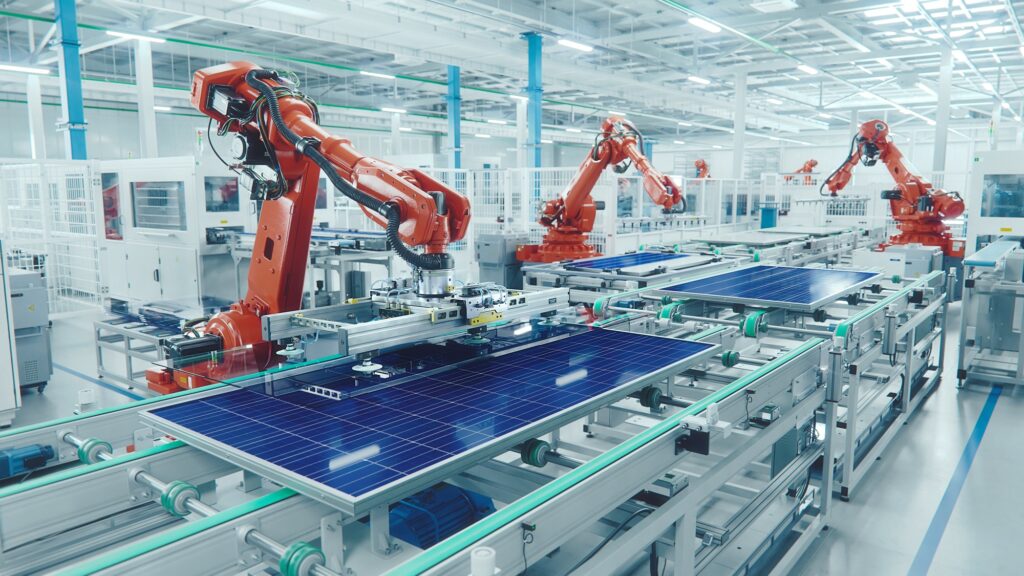Manufacturing is second only to medicine as the most time-sensitive business there is, with the livelihoods of every employee hanging in the balance. Simply put, manufacturers live and die by how well they manage time, resources, costs, and time.
The future of robotics in manufacturing
Automation is the flywheel that keeps the manufacturing in step with fast-changing customer requirements. For automation to succeed, it can’t ever exist in a vacuum; it needs to be anchored to contribute to customers’ outcomes.

Why robotics adoption is increasing
The unique challenges manufacturers face today are defining which technologies are best suited to help them overcome obstacles and keep growing. Robotics is helping solve the continued labor shortage across manufacturing, especially in remote regions globally. Improving production forecasting, yield rates, and increasing quality are three measurable benefits robotics delivers today.
One of the fastest-growing and most proven ways automation adds value is through robotics. Forecasts suggest that the global market for industrial robots is set to soar to $43.32 billion by 2027. The global industrial robotics market was valued at around $48.5 billion in 2022 and is expected to reach approximately $142.8 billion in 2032, growing at a compound annual growth rate (CAGR) of slightly above 11.4% between 2023 and 2032
How has robotics helped in manufacturing?
The following are ten ways robotics manufacturing is helping manufacturers achieve stronger results in an uncertain, challenging economy:
1. Increasing robotics expertise internally with on-the-job training is a win/win for employees and manufacturers. All manufacturers face a growing skills gap, especially in robotics, a highly sought-after but scarce skill. This gap could potentially cost the economy $1 trillion in 2030 GDP. Automating tasks and improving shop floor accuracy, speed, and quality with robotics can close this gap. Manufacturing workers who learn robotics and maintenance can advance their careers and close the skills gap.
2. Stepwise gains in productivity. Shop floor robotics can boost productivity by automating time-consuming tasks. This lets manufacturing teams focus on higher-margin work. According to studies, robotics-focused training can boost automated task productivity by over 70%. By increasing operational efficiency at the machine level, workers are freed up to focus on more complex, valuable tasks.
3. Improving process and product quality control. Accurate and precise robotics can reduce defects and improve product quality. Precision and consistency allow robots to perform precise tasks. Errors and rework decrease, improving product quality. Robotics optimize product quality, improving customer satisfaction and brand reputation by reducing human error.
4. Enabling greater production adaptability and flexibility. Robotics-as-a-Service (RaaS) lets manufacturers scale their robotic workforce and respond to demand changes easily. This flexibility helps them adapt to market changes and seize new opportunities. RaaS allows manufacturers to quickly adjust production capacity to market demands, keeping them competitive and agile in a fast-changing market.
5. Accessing advanced robotics technologies as they add new product lines and grow. RaaS solution providers allow manufacturers to test new robotic solutions that could improve manufacturing processes. This allows them to follow industry trends and discover new methods that could give them an edge. Keeping up with technology helps manufacturers innovate and improve.
6. Improving worker health and safety by having robots do the most dangerous work. Industrial robots that perform dangerous tasks have reduced workplace injuries. According to a study, increasing robot exposure by one standard deviation reduced work-related injuries by about 16%. The cost of industrial robots has decreased by over 50% in the past 30 years, making them more affordable and accessible.
7. Automating the least desirable tasks improves employee satisfaction and retention. Robotics, in general, and RaaS specifically let employees focus on higher-value, knowledge-based tasks by freeing them from mundane tasks. Job satisfaction and retention increase with more skill use. Manufacturers can boost employee engagement and loyalty by investing in their development.
8. Reduces the environmental impact of manufacturing operations. By automating the most energy-intensive tasks, manufacturers can reduce their carbon footprint on the environment. Smaller manufacturers rely on RaaS providers for support and guidance to meet industry-specific sustainability standards. Conversely, larger manufacturers often have dedicated teams focused on sustainability. Large-scale manufacturing operations also have ongoing Environmental, Social, and Governance (ESG) programs. More sustainable manufacturing practices reduce manufacturers’ environmental impact and support global sustainability.
9. Improving supply chain efficiency. Robotics is used to automate warehouse and logistics operations, leading to improved inventory management, reduced shipping costs, and faster delivery times. By streamlining supply chain operations, manufacturers achieve greater operational efficiency and deliver products to customers more quickly and cost-effectively.
10. Streamlining design-to-manufacturing. Assembly, inspection, and testing can be automated by robotics to improve design-to-manufacturing workflows. This can reduce lead times, improve product quality, and boost production efficiency. Automating design-to-manufacturing workflows with robotics speeds up production and improves product quality.
Conclusion
Manufacturing companies must adopt robotics to stay competitive in the 21st century. Robotics can improve manufacturing results by addressing the skills gap, increasing productivity, manufacturing quality control, and design-to-manufacturing workflows. Strategic and effective robotics use will shape manufacturing. As manufacturing enters a new era, the question is how to use robotics to improve results.
Discover more
Download the DELMIA eBook, Enabling Digital Continuity with the Robotic Virtual Twin, to learn more about how DELMIA Robotics can help you achieve intelligent, optimized, and autonomous manufacturing with artificial intelligence and robotics.
Listen to DELMIA’s podcast Virtual Commissioning Revolutionizes Robotics for more insight.
